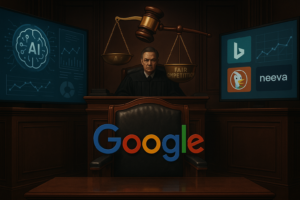AI and Its Role in Modern Threats: A Deep Dive into Recent Misuses
Artificial Intelligence (AI) has undoubtedly transformed various sectors, offering groundbreaking advancements in healthcare, finance, and autonomous systems. However, as with any powerful technology, AI’s potential for misuse is a growing concern, particularly in the realm of cybersecurity.
Recent Incident and Its Implications
A recent incident has brought this issue to the forefront when a man used AI to plan a violent attack outside a prominent hotel. The suspect reportedly utilized a generative AI tool, ChatGPT, to gather information on constructing explosive devices and orchestrating the attack. This marks a significant moment in the intersection of AI and cybersecurity, highlighting the potential for AI to be exploited for malicious purposes.
The case raises several questions about the ethical implications and security challenges posed by AI technologies. While AI models like ChatGPT are designed to assist users by generating text-based responses, their ability to provide detailed and potentially harmful information can be manipulated by those with malicious intent.
Reactions from AI Developers and Cybersecurity Experts
The incident has prompted reactions from AI developers and cybersecurity experts alike. OpenAI, the company behind ChatGPT, expressed its commitment to ensuring AI tools are used responsibly. They emphasized that their models are designed to refuse harmful instructions and provide warnings against illegal activities. Despite these safeguards, the incident illustrates the limitations of current AI safety measures.
- OpenAI’s commitment to responsible AI use
- Limitations of current AI safety measures
Call for Stricter Regulations
Cybersecurity experts are now calling for more stringent regulations and oversight to prevent AI misuse. As AI continues to permeate various aspects of daily life, the need for robust policies that balance innovation with security is more pressing than ever. These policies should aim to protect society from potential threats while fostering the positive advancements AI can bring.
Moreover, this incident underscores the necessity of public awareness regarding the ethical use of AI. Educating users about the potential risks and responsible utilization of AI tools can mitigate some dangers associated with their misuse.
The Dual-Edged Nature of AI Technologies
The case serves as a stark reminder of the dual-edged nature of AI technologies. While they hold the promise of tremendous benefits, they also pose significant risks that need to be addressed proactively. As AI continues to evolve, the cybersecurity community, policymakers, and AI developers must collaborate to establish a framework that ensures these technologies are used for the betterment of society, not its detriment.
Conclusion
In conclusion, the misuse of AI in planning a violent attack is a wake-up call for the global community. It highlights the urgent need for comprehensive strategies to manage the risks associated with AI, ensuring that the benefits of these technologies can be realized without compromising security and ethical standards.


